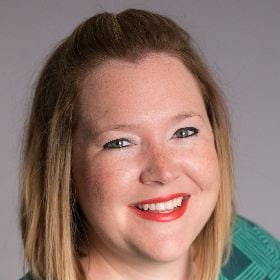Age is not a factor that is often prioritized when it comes to DEI efforts, according to a new study from Washington University in St. Louis. Natalie Galucia
Natalie Galucia
The study, Age as a Factor in Diversity, Equity, and Inclusion Initiatives in Higher Education, was conducted between February 2022 and January 2023 and published in the Journal of Gerontological Social Work.
Through a series of focus groups and individual interviews, the researchers collected responses about the role age plays in DEI initiatives from 42 DEI personnel members from 36 higher ed institutions – 14 private and 22 public schools across 19 U.S. states.
“Increases in life expectancy call for educational systems to change orientation toward age and the longer life course,” the report read. “As people are living and working longer, the need for on-going education and training grows. Today, student bodies are more age-diverse, employees are working longer, and classrooms and offices are becoming more age-integrated.”
According to the study, age was acknowledged as a factor in the DEI landscape, but it is often not a topic that is given attention.
Even WashU’s own Office of Institutional Equity hasn’t made age a priority, said study co-author Natalie Galucia, manager of the university’s Harvey A. Friedman Center for Aging.
Dr. Nancy Morrow-Howell, Betty Bofinger Brown Distinguished Professor of Social Policy at WashU, served as the study’s lead author. Sophie Mauk, a former research assistant at the Aging Center, was listed as another co-author.
The answers from DEI personnel produced findings along nine key themes, one of which was that there are a number of reasons as to why age is not a recognized identity factor in DEI efforts. DEI offices are under-resourced as is, so addressing matters of age in addition to other matters can be difficult, respondents said.
Despite responses in the study itself showing that ageism is common and pervasive, people do not regard age and ageism as significant topics. Rather, it is often times accepted, according to the study.
“Participants did not seem to feel that ageism is a significant issue on our college campuses and even in our society - that it is a more accepted ‘ism,’” study co-author Michele Dinman, project coordinator for the WashU for Life Initiative at the Aging Center, said in an email.
Other factors, such as race, tend to take priority, and responses indicated reluctance among DEI professionals to shift their focus to topics other than those.
“Although several focus group participants recognized that it is not a zero-sum situation, there was the theme that focusing on anything but race and other minoritized identities would be distracting,” the report noted.
Within DEI offices, matters of age are usually brought up in legal contexts of compliance and discrimination law, but not really mentioned as part of DEI efforts. Respondents even suggested that the topic may be more relevant to and should be addressed in facilities outside of DEI altogether, such as in centers of aging or life-long education programs.
Depending on the setting, issues and thoughts surrounding age can manifest differently, according to the study. Whereas “traditional” four-year higher ed institutions may focus more on younger adults, at commuter colleges where student populations can be older, age diversity may be more normalized.
Universities are multigenerational places, especially when accounting for faculty and staff, Galucia said.
“Universities are still very much seen as serving mostly the traditionally aged student, those who are still in their upper teens and low 20s,” Galucia said.
Even within an individual college, separate departments and programs can view age differently, respondents indicated. According to one interviewee in the study, age inclusivity was better in social work and the liberal arts as opposed to medicine, science, and engineering.
In many cases, students not of “traditional” age – such as those resuming past academic pursuits – end up feeling excluded both in and out of the classroom and face microaggressions from educators and students alike, respondents said.
Further divides may be present among faculty, staff, and students along the lines of age, according to the study. Older faculty were associated with issues of stubbornness against learning new technologies and terminologies, such as students’ pronouns.
“The pushback was for the older faculty, particularly older white men, they were up in arms because it seemed like everything that was normalized for them over the decades that they had been in higher ed was now being challenged as bad, and they could not understand why their students were upset or offended,” the report cited.
Older faculty and staff can also look down on and be dismissive of younger ones, though the reverse is possible as well, the report noted. Respondents pointed out that older employees can be subject to age exclusion and potentially being “pushed out” of their roles.
Notwithstanding, DEI offices at certain institutions do have some offerings having to do with age, ranging from transition programs and specialized orientation for older students to age-inclusive hiring practices and retirement planning services, according to the study.
And some institutions have implemented workshops to help foster intergenerational relationships and bridge gaps in understanding between older individuals – faculty and staff – and younger ones – students.
Dinman called for schools to be more proactive in spreading awareness about age as an aspect of identity, age biases, and ageism.
.















